 UPDATED REVIEW – May 1, 2019 – Roland HP504, HP506, HP508 Home Digital Pianos – Recommended – The Roland Corporation has discontinued the HP504, HP506 and HP508 and a new upgraded line of digital pianos called HP603, HP605, LX7, and LX17 have replaced them. The HP504, HP506, & HP508 pianos were not discontinued because they were bad…actually they were quite good. But they now have a new piano sound and key action technology which Roland has incorporated into their new pianos. NEW UPDATE November 2019 – Roland has introduced a new line of home digital pianos that supercedes everything before it. This new series of digital pianos is called the HP702, HP704, LX705, LX706, LX708, GP607, and GP609.
UPDATED REVIEW – May 1, 2019 – Roland HP504, HP506, HP508 Home Digital Pianos – Recommended – The Roland Corporation has discontinued the HP504, HP506 and HP508 and a new upgraded line of digital pianos called HP603, HP605, LX7, and LX17 have replaced them. The HP504, HP506, & HP508 pianos were not discontinued because they were bad…actually they were quite good. But they now have a new piano sound and key action technology which Roland has incorporated into their new pianos. NEW UPDATE November 2019 – Roland has introduced a new line of home digital pianos that supercedes everything before it. This new series of digital pianos is called the HP702, HP704, LX705, LX706, LX708, GP607, and GP609.
Read the following review for the discontinued HP504, HP506 & HP508: Roland started making digital pianos many, many years ago and is well known throughout the world for building higher quality, advanced digital music products that piano students, players, teachers, professional musicians, churches, and studios use. I have played and used many of the Roland music products over the years including their digital drum kits, MIDI guitars, home organs, pro keyboards, digital pianos, pro audio systems, keyboard & guitar amps, headphones, special effects systems, MIDI products, and other music gear, so I am very familiar with their products.
| HP508 polished ebony |
When it comes to digital pianos, which is my specialty, I am very picky about quality and realism in terms of accurate piano key action and key touch, authentic piano sound & dynamics with full expression capability, realistic pedaling response, and durability, especially in the higher priced models such as the Roland HP series pianos. The HP (stands for “home pianos”) series has been out for many years and Roland is well known for them. These pianos seem to get better every time a new model comes out and the Roland HP series is a strong competitor to the Kawai CN & CA series as well as the Yamaha Clavinova CLP digital piano series in similar price ranges. Since Roland does not publish its retail or store discount prices on its web
| Roland HP504/HP506 control panel |
site or dealer web sites, nor are these instruments available on the Internet in the US, getting price info is a little hard to come by in the US. However, it’s my best guess based on what I’ve already seen at Roland piano stores throughout the US, that the HP504 in satin finishes are selling in local US stores for approx $$2500US, the HP506 (now discontinued) in satin finishes are selling approx between $3300-$3700US, and the HP508 (now discontinued) in satin finishes are selling approx between $4500-$5000US. Actual selling prices will vary depending on where you live, your local Roland dealer, the prices they charge, and the demand for a particular model. The HP506 and HP508 are also offered in a beautiful high polished ebony finish which increases price by about $600US each (or more)…so there is definitely a premium for buying a high polish ebony finish, but they are certainly quite elegant in their appearance.
I have already played these pianos many times and I really did not expect them to be as good as they were as it did not look like much had changed on the inside from previous models. However, I was very surprised that they had changed (improved) in a big way with regard to the fundamentals of piano playing including key action, sound & dynamic response, and pedaling. The best product change analogy I can use is when Apple computer company upgraded their iPad2 to the iPad 3 with Retina display screen.
The iPad Retina display was a huge upgrade in terms of the screen display quality and realism for images, the processing power was greater too and buyers were very impressed and bought them in huge numbers. The Roland HP504 (left pic with bench), HP506, & HP508 is much the same way in its new upgrades of noticeably superior piano performance over previous models. The new key actions are much quieter and move better than before, the piano sound and dynamic range is much more realistic & pure, and pedaling is improved. For those people who play digital pianos or have played good acoustic grand pianos, you would be able to tell how good these new Roland pianos really are as compared to anything that Roland and other piano companies have had before. The subtleties in tonality, nuance, dynamic range, and expressiveness are evident when playing complex music in ways not possible on Roland pianos in the past.
Roland has two new upgraded piano hammer weighted graded key actions and they have been given names instead of the boring model numbers used in the past. The best key action, which is in the HP506 & HP508, is called Concert Keyboard (an appropriate name actually). The key action in the HP504 is called Premium Keyboard. The difference between the two is that the Concert Keyboard in the HP506 & HP508 feels even more like a grand piano to me and the Premium Keyboard action in the HP504 (below left pic) is feels slightly less like a grand piano as compared to the Concert Key Action but still very enjoyable to play and much better than most other brands in its price range. In comparing even the HP504 Premium key action to the Yamaha CLP525 and CLP535 digital pianos, the Yamaha GHX key action feels somewhat stiff to me when playing. This can possibly create hand and finger fatigue over a period of time and for me that experience is not near as enjoyable. I much prefer the Roland key action down weight (aka: (touch weight) along with a nice upweight key return. Piano keys should go down fairly easily which is the way most good acoustic grand pianos are like when you play them. So when compared to other brands I believe the newer Roland key actions definitely come out near the top and are more enjoyable for beginners or advanced players than many other brands.
| Roland HP504 |
As compared to the lower priced Roland RP501R (under $1500), the HP504 Premium Key Action offers a higher quality, more authentic piano playing experience but it is also more money than the lower Roland RP series pianos found at general music stores. This is the first major key action upgrade for the HP series in many years in terms of feel, key sensor ability and sensitivity, reaction time, and overall quietness of key movement and keybed. For the first time that I know
of, Roland now has 3 electronic key sensors per key along with an additional key scanning processor dedicated to processing key velocity information. This new 3-part electronics
system is in all of the new DP, HP, & LX models and makes a
huge difference in overall touch sensitivity, dynamic range, and piano
tone subtitles and is especially noticeable if you are a more advanced
player. When it comes to piano sound, it’s really all about expression and expressing yourself in a musical way. These new models do such a fine job of that, that even an experienced piano/music teacher like myself would not hesitate to recommend these pianos over many acoustic pianos out there when it comes to having the necessary fundamentals a student or player needs to make good music. So if you ever hear a piano teacher say “I would never recommend a digital piano to my students if they want to be serious about their musical growth,” then that teacher has not played a new higher quality digital piano lately.
| New synthetic ebony keys |
As I mentioned before, unless you have a very musically trained ear for listening to or playing high quality acoustic pianos, you may not be able to recognize how good these new Roland digital models are as compared to some lower priced digital pianos. This is because sound and feel are, at the end of the day, subjective & personal and objectivity for the untrained ear and fingers can be difficult to obtain. Having said that, the piano sound realism, key sensitivity, and dynamic range along with a much quieter key action than ever before is really quite amazing in all three models, and it really does give you the impression that you are playing a real quality acoustic piano and much more so than previous Roland piano models. The key weight and static touch weight (amount of finger pressure required to press keys when keys are at resting position) seem to be quite natural & organic (moves smoothly) as well as balanced from bass through treble range and from black keys to white keys. Unless you get a chance to play one of these pianos locally you’ll just have to take my word for it:).
| New synthetic ivory keys |
Both new Roland key actions (Concert & Premium) also incorporate a grand piano simulation
movement with a “let-off/escapement mechanism.” This key movement
simulates the key action feel of a grand piano as opposed to an upright
piano. When you press the keys down
slowly on a real grand piano, you can feel a slight hesitation or notch
about half way down when the key action is moving and this is called the
escapement or let-off effect. Generally speaking, you cannot feel escapement/let-off in upright acoustic
pianos. Is this
let-off/escapement feature a necessity for playing a piano?…not
really…but it’s cool to have because it does offer even better playing feel, especially for more advanced
players:) The white piano key tops
are coated in a proprietary synthetic ivory material which (tries to) duplicates the feel
of the older acoustic pianos which had real ivory keys and has a slight textured feeling to them. This synthetic ivory was on the previous models too but the new HP series have been improved and feel and look more natural. Also, Roland has added new synthetic ebony for the black keys on the Concert Action only, which completes the total realism of playing a real organic piano keyboard on all keys. This synthetic substance on both black & white keys
has a slight texture and helps absorb sweat from the fingers and offers a smoother playing
experience. It also looks classier than the all
shiny white and black keys, and I personally like this feel very much.
| HP506 rosewood |
The piano cabinet and control panel in all three models have been redesigned with more contemporary lines and a sleeker looking panel layout with redesigned buttons and functions that are a bit more intuitive to use. The satin cabinet finishes also look more realistic than previous models and are more scratch resistant along with the cabinets being more elegant to look at. Even the Roland HP piano logo on the HP pianos was redesigned and relocated to the top of the music rack where it looks elegant and classier, which is a small but important detail in my opinion. Roland did keep something that was on previous models and that is where the control panel is located and the fact that the key cover is a two stage cover allowing the player the ability of covering the control panel without covering up the keys. This allows for a visually more minimalistic acoustic looking piano when playing it and yet you can easily slide the cover back up inside the piano and expose the control panel again so you can use the buttons to change functions and features. I really like how that works and I am a big fan of having the buttons up above the keys as opposed to on the left or right side of the piano keyboard as in other digital piano brands and models.
The acoustic piano sound itself (taken from Steinway acoustic grand pianos) on all the Roland HP pianos are identical regardless of model and they all have 128-note polyphony
piano memory (how many notes can be played and sustained at one time) which is more than enough for even the most complex piano pieces because of Roland’s advanced polyphony voice allocation. It’s a fancy way to say you won’t run out of notes even when layering two sounds together or playing complex MIDI song files while playing live over the top of it. Roland calls its acoustic piano sound SuperNATURAL Piano
meaning that
Roland has attempted to reproduce a much more “natural & beautiful” acoustic
stereo sound in their digital pianos and I feel they have done this
quite well on these new models. In fact, if you plug in a good pair of stereo headphones to one of these pianos they would all basically sound the same
to most people and have a great piano sound except the higher
priced HP508 would have many more key touch sensitivity settings (100 of them as opposed to 5 on the other two models) as well
as more digital sound
enhancements including what Roland calls Piano Designer
effects. The additional touch sensitivity settings are really a big upgrade and allow for incremental changes in how the piano sound reacts to your finger touch. The key touch is much more customizable (for children or adults, beginners through advanced) on the HP508 because of so many more touch sensitivity settings, which is a good thing. There are also certain tones that occur inside a regular acoustic piano when
the hammers hit the strings and the strings are vibrating, as well as
how the pedals influence the piano sound. Some of the acoustic piano elements include duplex scale, hammer noise,
damper noise settings, soundboard behavior, and digitally opening and closing the lid of a grand piano at different height levels, and they are included in the HP508 (and LX15e) but some are not in the HP504 & HP506. Whether or not these additional acoustic piano elements are
something you will personally hear one way or the other is hard to tell depending on your ears, expectations, musical experience,
and sensitivity. But I can assure you that the extra piano sound upgrades in the HP508 (as compared to the HP506 & HP504) do bring another level of piano playing authenticity to the HP508 and I can hear the difference. The main function of any good digital piano is to play & sound like a real high quality acoustic piano and a good piano manufacturer is always looking for a better way to do that and yet keep their digital pianos at affordable prices.
Overall, I like the SuperNATURAL piano
sound very much because it’s expressive and offers a beautiful acoustic playing experience more closely associated with the Steinway grand piano sound and I can hear that and it’s impressive. However, everyone has
different ears and reacts to sound differently but I personally enjoy
playing and listening to the Roland acoustic piano sound in these new models and in the HP508, it’s a big resonate piano sound also because of the substantially upgraded internal speaker system. People who own these new pianos have told me they really can’t believe their ears at how good the piano sound is and how much it sounds like they are playing a real piano. For me personally, the sound of any of these new models, especially through headphones, really moves my musical soul and allows me to create the music that’s in my head and on the music in front of me.

With regard to the piano pedals, they operate very smoothly and feel realistic to press down and incorporate the three traditional pedal functions
(damper/sustain, sostenuto, and soft) of regular acoustic pianos. They
do work better than other digital pianos I have played and also simulate a
good note sustaining experience using a damper continuous detection pedaling feature. This function gives the player incremental note sustain amounts rather than just on & off or half pedal. It is definitely a much more realistic acoustic piano playing experience than other brands as well as
physically feeling like the pedal is changing resistance when being
pressed down. Roland calls this feature Progressive Damper Action. Having quality piano pedals & accurate piano pedal operation is very important, especially to more advanced players. Roland does not skimp on this area of piano playing like some other digital piano manufacturers do. Even the height of the pedals (an important aspect of pedal playing) is
accurate as compared to concert grand pianos like the Steinway acoustic
grand pianos. Every aspect of pedal playing can make a big difference in
technique and performance and these are not features and functions that
should be overlooked.
 |
| HP508 control panel |
The HP models (all of them) offer many high quality instrument sounds divided into 4
control panel buttons above the keyboard. These sounds include 14
variations of acoustic grand pianos, 5 upright pianos (uprights are generally not found on other brands), 10 electric pianos, and
321 additional instrument tones (just about anything you can think of
including strings, organs, banjo, synth, sax, trumpet, sitar, guitars, individual
drum sounds, etc:) for a total of 350 tones which is a lot! You can see
all of the instrument names and other function descriptions in the LCD
user display screen which is very nice for displaying relevant info and the HP508 has a slightly better and larger display screens for accessing even more information. On the panel button with the 321 extra instrument sounds, it can be a bit tedious in getting to the sound you want by scrolling to it
with the value +/- button, but this is true of other brands as well.
However, Roland has created a special iPad app that allows you to select
all of the instrument sounds on the piano (all Roland HP models) from
an iPad connected wirelessly to the piano. This iPad Roland app called Piano Partner,
displays all
350 tones from within the piano which are easy to find and
select right from an iPad touch screen (left pic). Of course you need to dedicate an iPad to
the piano which not everyone can do as it does add extra cost, but it is
very cool to do that and personally I think an iPad is a great addition to these pianos . On the piano buttons themselves, you can
change the “tonality” of the sounds by increasing or decreasing the
brilliance or mellowness of the piano & instrument sounds and you
can take any two sounds and layer them together or split them separately
on either side of the keyboard. The pianos also have the duet twin
piano feature which lets you electronically divide the 88-keys into two
identical 44-key keyboards playing the same notes in the same octaves so
that two people can play the same music at the same time. It’s a great
feature for teacher-student, parent-child, etc, and many of the top
brands are including that feature in their pianos too.
 |
| USB ports |
A digital MIDI recorder is built into each model featuring 3 tracks of
recording and playback (for up to 3 separate instruments) and being able
to save the songs on a USB flashdrive which is very cool. There is also
an audio wav file recorder which allows actual CD recording and
playback giving a precise rendition of your song which you can then play
along with or save on a USB flashdrive for loading onto your computer
to use in notation programs or attach to emails to send to family &
friends so they can hear you on their computers…lots of fun with that.
You can also plug in another instrument or microphone into the pianos
and record that sound along with the piano and combine them. You can
also use a key transpose feature on the pianos to transpose your
recording (including the external audio source) to another key for
singing or modulating the song up or down in semi-tones one step at a
time. Even playback speed of MIDI and audio song files can
be adjusted up or down which is very cool for audio and most digital
pianos cannot do this on audio wav/CD files. So that means you can play
along with your favorite CD song direct in your piano and slow it down
to 75% of original speed to learn how to play it at a better (slower)
speed while learning…and it still sounds good! I have not seen
audio/CD song tempo control before on any other brand that has audio
record or playback.
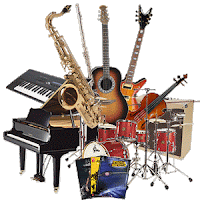 |
| General MIDI sound |
All Roland piano HP models playback General MIDI song files
from a USB flashdrive which is a great feature and one I use all the
time in my studio. The General MIDI song format allows you to play your
piano parts along “with the band or orchestra” and to interact with
multiple instruments at one time using well known piano lesson books
including thousands of popular songs from a variety of music styles and eras which can be found on the Internet.
For more info on the General MIDI format go here: General MIDI and Playing Piano.
The MIDI song titles can be accessed and seen from the LCD user display screen which make using it much more intuitive as compared to only having LED display screens or none at all. Roland has a number of other ways its pianos can record music and
playback songs for music education & learning that are quite useful
and can be important when trying to learn music whether you are a
beginner or professional. The recording and playback can be done as an audio WAV file which allows you to have an actual CD quality song that can be played on other devices such as your computer or converted to a MP3 audio file to play on an iPad, iPod, or iPhone. But this comes as no surprise to me because for
years Roland has built professional recording & music learning
devices for musicians, teachers, and students who use them in their home
or studio (as I do) for more effective practice sessions. If you want to know
more about this you are welcome to contact me.
 All of these models can connect directly to an iPad for another
All of these models can connect directly to an iPad for another
interactive way of learning about music and playing the piano, and I use
iPad piano learning/teaching apps all the time in my studio which
provides a cutting edge visual way of interactive piano practice and
learning. A unique feature of the Roland HP pianos is that they
can do a wireless USB connection to an iPad using an optional Roland wireless USB
adapter and specially created Roland iPad apps such as the Piano Partner app (see pics on left). The Piano Partner iPad app does a number of things including visually letting you access all of the instrument sounds in the pianos by selecting the specific instrument sound (more than 300 of them), which I mentioned earlier, and touching the iPad to get it. It’s intuitive and really something every owner of a new HP models new Roland piano should have. The Piano Partner app also displays the actual musical notation for all
200 lesson songs built inside the Roland pianos so that you can see the
music and play along at any speed you like. You can also mute the right
and/or left hand so that you can play that part live while the other
“hand” is is being heard playing back on the iPad Piano Partner app. The songs include
popular lesson songs that teachers use for their students and there are
even orchestral accompaniments for some of the songs to make it sound
even more exciting. It’s easy to use, fun, and quite motivational and is
recommended by music teachers and I really like it. The app also displays a flash card game
that allows you to learn to identify notes on the staff so that you
become better at sight reading. Beyond all that, on the Roland pianos there is wireless audio
to play music from your iTunes songs (with tempo & transpose control) and hear
it through the piano speakers by way of a new Roland Air Performer app without the need of connecting audio
cables from the piano to the iPad. This is very cool and unique and I
have not seen this feature offered on other brands before. The audio
sound & USB connections from other non-Roland iPad music apps still need connecting cables,
but that’s true of the other brands too.
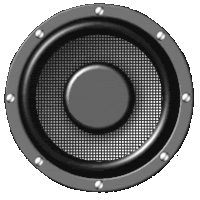
 The speaker/audio system in each model is good and gets better as you go up in
The speaker/audio system in each model is good and gets better as you go up in
models with the HP508 being noticeably best of all. Each piano model has more audio
power, bigger speakers, and more speakers than the model before it and
the better internal speaker systems do make these pianos sound more
realistic. The HP504 has 24 watts of total audio power going into 2
amplifiers and 2 speakers and although that specification may not seem like much, this model is surprisingly loud and full for its smaller size due to special Roland speaker technology and competes quite well with the bigger 40+ watt audio power of other
digital pianos. Even though the HP504 specs are quite similar to the much lower priced Roland RP401R, the HP504 piano sound system has a noticeably richer more resonate piano quality to it as compared the the RP401R in the “under $2000 price range.” These Roland models (including the HP504) also have built-in audio outputs so you can add a small external sound system to any of the models (like you would to a TV, iPod, home stereo, etc) and then you can enhance the volume even further if you want. The HP506 has 74 watts (an upgrade over previous model)
of total audio power
going into 4 amplifiers and 4 speakers, and the HP508 has 150 watts (an upgrade over previous model) of total
audio power going into 4 amplifiers and 6 speakers. The HP508 is a bit taller piano (about 45″ tall with music rack up – about 38″ tall with music rack folder down) so that
the 6 speakers can be laid out inside the piano with two near the top,
two near the keyboard, and two below pointing forward (instead of down in the other two models). This system gives a more balanced
approach to recreating the acoustic piano playing experience and it
really makes the piano sound like a big acoustic grand piano. So it’s
not only the power or the internal audio systems themselves, but how and
where they are installed in the piano and how the individual piano
tones are projected through those different systems. Roland has been in
the professional pro audio business for many years (I have owned and used some of their pro audio speakers) so they do have
experience in this area and it shows in these digital pianos.
The best way I can sum up and identify the major changes in the HP504, 506, and 508 from the previous models are as follows:
1. PHA-4 Concert Keyboard with Escapement and Ebony/Ivory Feel features
Roland’s latest high-resolution touch-detection technology
2. Fortissimo (dynamically very loud) playing styles are fully expressed with the Dynamic
Harmonic feature, which provides both a unique tonal character and
powerful sound
3. New Individual Note Voicing to customize the sound to your taste by
adjusting the pitch (tuning), volume, and character of each note independently including Stretched Tuning: -50.0 – +50.0 cent, Note Volume: -50 – 0, Note Character: -5 – +5
4. Headphones 3D Ambience effect sound experience while using headphones for private practice
5. Display music scores and selected tones & songs with Piano Partner app for iPad
6. Independent volume control for
headphones, volume limit function, and a 4 level tilt adjustable music rest which no other major brand has
7. Different connectivity with mini stereo input and output jacks as opposed to standard 1/4 jacks
I do need to point out that while all of the upgrades on these new pianos are pretty impressive, the most interesting new feature to me is that for the first time that I know of on a top name home digital (upright style) piano, you can actually adjust each of the 88 notes one at a time for tuning, volume, and character (voicing). On other top name digital pianos you can only do this for all 88 keys at one time, but not for each note individually. This may not be useful or ever necessary for beginner thru early intermediate players, but for more advanced players you may have reason to want specific notes individually altered because of the way you hear your music and the notes that are playing. It’s all about the “ear” and about your piano playing experience & skill level, thus you may find this new and impressive feature useful to be able to play your music exactly in the way you want it to sound over 88 individual notes. I have used this feature to customize the piano sound and I like the result very much.
Another new Roland creation I found intriguing was the “3D effect” through
stereo headphones. It’s
supposed to give you the impression the piano sound is all around you
coming from different directions as opposed to directly into your ears.
Roland calls it “an immersive sound
experience” which gives you the feeling you’re not actually wearing
headphones at all…and that’s really the point of this feature. I tried
it out and found that overall, it had a more natural effect than
listening through stereo headphones without it. It actually
did sound like I wasn’t wearing headphones…although I was:). This is
new technology in digital pianos and it’s a nice feature to have
especially if you’ll be using headphones often. The 3-D headphone sound effect
only works when the ambiance button on the piano control panel is
selected and it can be turned on or off or controlled in incremental levels Also, it’s important to
have/own excellent sounding stereo headphones for private playing
because you want to capture all the nuances of the new
enhanced Roland piano sound dynamics and tonal qualities. I can give you
some good
recommendations if you don’t already have headphones.
| HP506 rosewood closed key cover |
If you want a realistic and satisfying “acoustic piano” style playing experience without an over abundance
of digital features (no drum rhythm
patterns, no automatic chord styles, etc), the Roland HP504, HP506, and HP508 would be a very good choice depending on your budget, and I do recommend them. They are a definite upgrade from the prior models in key action & piano dynamics and play great. Although these HP pianos do a lot more than I have mentioned in this review in terms of digital features they have, those things are just “frosting on the cake” as far as I am concerned. Once you get up into this price range it’s mostly all about piano playing in my opinion, and that’s definitely where the Roland HP models excel although the other brands do a good job too in their own way. Roland products have been known to be very reliable overall and these pianos come with a 5 year parts, 2 year labor labor warranty which is quite good. As I always tell people, do your homework before making a buying decision especially when it comes to getting the most for your money, but you can’t go wrong on any of the new Roland HP digital pianos and you can enjoy them for many years to come.
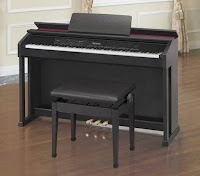 |
| Casio AP470 |
I always like to suggest good alternative digital pianos so people have a chance to make the best decision before purchasing one. Below are 4 excellent alternate choices which offer a variety of features along with a very satisfying piano playing experience. There is one thing that I always try to get people/shoppers to understand: you do not have to spend a lot of money to get a real good piano playing experience along with some of the latest digital piano technology. Two very good digital pianos to consider under $2000 released in the US (to the internet) are the Casio Celviano AP470 and AP650. These 2 models actually offer more in a some areas with regard to key action, piano sound, features, and cabinet design. The new AP470 is $1499US discount price and the AP650 is $1899US discount price. The AP650 is in a completely different league when it comes to the features that it offers as compared to the Roland RP401 so if you can stretch your budget just a few more hundred dollars then that model would be a good consideration for a longer term purchase. Both Celviano models even have a 5 year labor warranty with in-home service as opposed to the Roland 2 year labor warranty, so that extra labor warranty is a big upgrade as well. Go to the following links below to read my reviews on these two new models.
Celviano models.Casio AP650 Review
| Samick NEO |
Another very nice digital piano to consider is from the Samick piano company and they recently came out with an impressive new model in a beautiful polished ebony acoustic piano cabinet which is worth consideration in my opinion. This model is a unique alternative to a Yamaha & Roland digital piano, as well as other major brands. Its piano key action, piano sound, and pedaling response is surprisingly impressive as are the orchestral and traditional instrument sounds as well. Although there are not as many instrument, recording, and digital features on the NEO as there are on Roland pianos, when you connect an iPad through a USB and audio connection in the NEO piano, then there are many very useful iPad apps which can access a variety of instrument sounds, rhythms, recording features and other very features which can turn the NEO into much more than it already is. Also there is a factory direct introductory “private sale” where you can purchase this model direct for a much lower price than its $4395US retail price. Check out the Samick NEO at the following link: Samick NEO Review
 |
| Kawai ES8 |
One more thing: If you want to keep your expenditure for a new digital piano closer to $2000 and like a contemporary compact cabinet design with flexibility, you might also consider the new Kawai ES8 compact portable digital piano with its (optional) furniture cabinet. The piano itself is just $1999 internet price and I believe this new model is the best digital piano in any brand under $2000 in terms of responsive key action, expressive piano sound, and pedaling authenticity along with some very useful digital features in a compact digital piano without the traditional piano furniture cabinet. The ES8 is very impressive to me and can sound like a big, full acoustic grand piano too. Just like the Roland brand, Kawai is also highly respected as a international digital piano maker and they’re also very well known for their concert acoustic grand pianos. Take a look at my Kawai ES8 review at the following link: Kawai ES8 Review
If you want more info on new digital pianos and LOWER PRICES than internet or local US store discounts, please email me at tim@azpianowholesale.com or call direct at 602-571-1864.
*Check out these videos below demonstrating various things about the new Roland pianos
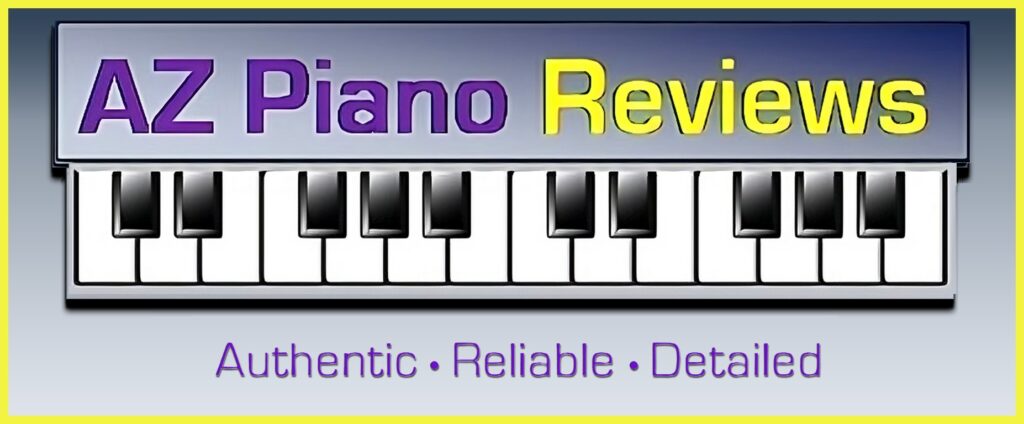



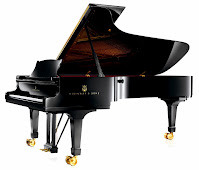
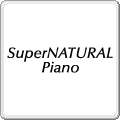
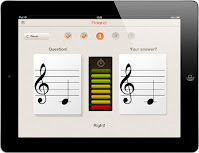





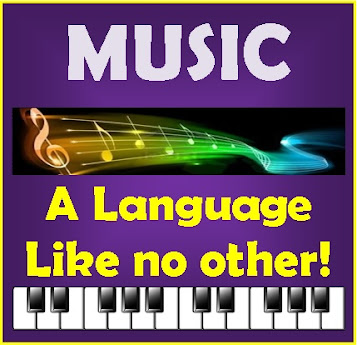
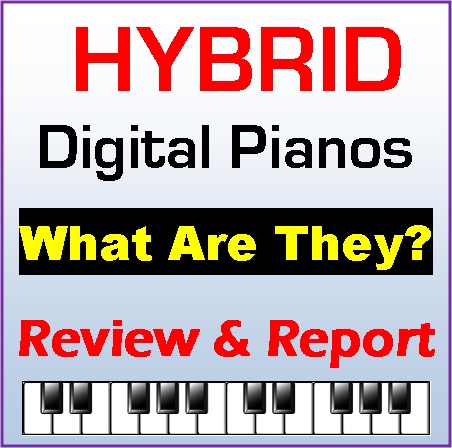
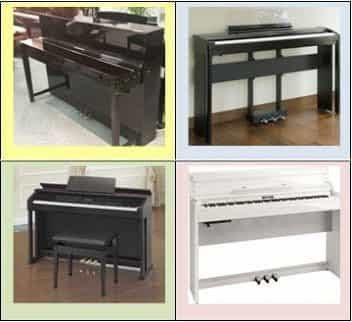
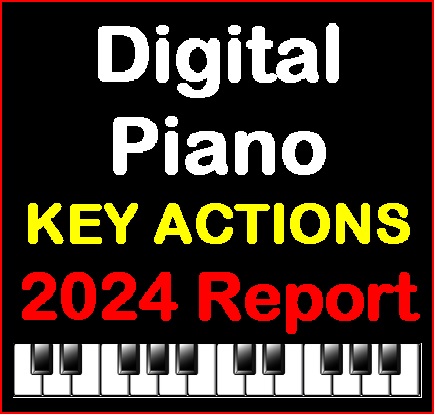
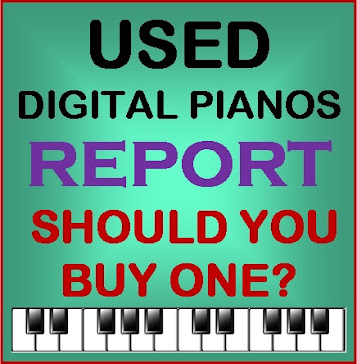
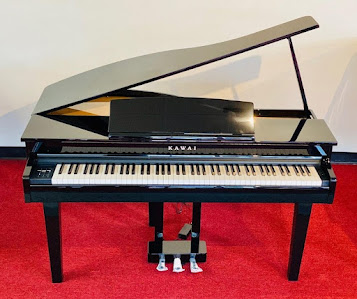
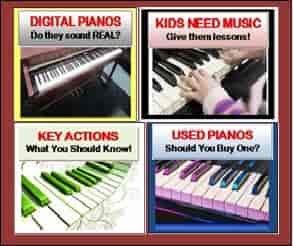
do you know if is going to be sell on USA?, i cant find where buy it
I bought the 508 in polished ebony finish for my birthday 2 weeks ago and absolutely love it! Roland Canada provided the financing over 2 years interest free. The keyboard action and feel as well as the overall sound are in a class of their own. The technology included is an important part of the enjoyment as well, split keyboard, electronic pianos and drums as well as playing along with my ipad is an added bonus that will get lots of use in the years ahead.
which is better yamaha clp 440 or hp 506
Thank you for this review. My insurance company are sending me the HP508 in Polished Ebony to replace a damaged 10-15 year old Technics. As I wasn't given the option of choosing the piano, I was a bit nervous, but your review has made me excited to see it! I was quite happy with my Technics, but it sounds like I'm going to love my new Roland.
Hi Tim
I'm trying to decide which piano to get. I'm deciding between the Roland DP90Se, DP90e, F130R, the Casio PX850, as well as possibly the Kawai CN34 or CA65.
I'm a beginner of sorts. I played organ for five years when I was a kid, but that was 30 years ago. I'm hoping it'll come back quickly, but I can't help but feel like it'll take me at least 3 years to play anything decent and get to a point where I can notice/take advantage of the differences in the pianos.
So, I'm a bit hesitant to plunk down 3K+ right now, especially since there is a chance I might also quit if I don't feel like I'm making enough progress or if I get bored.
At the same time, I like the idea of a proper piano brand like Kawai or Roland as they feel more grown-up and mature to me. I keep going in circles. Any advice?
thanks,
Alex
Can you please compare it with Kawai-ES7?
Thank you for this excellent review.
I want to learn to play piano and have narrowed down my choice to the Yamaha CLP535 and the Roland HP504. My daughter, who has been learning for 3-4 years will be the main player.
The Yamaha sounds mellower to me, with the Roland more attacking but as I'm not a pianist (yet!), I don't know what to look for in terms of touch or true piano sounds. What would you recommend from these two?
I've played piano for about 30 of my 41 years. I'm a fairly accomplished pianist,but due to kids and the lot, I haven't had a piano at home for about 7 yrs. So, now I have young kids, and would normally purchase an acoustic piano hands down, but I'm willing to make a go with the digital pianos as they have come so far. I'm currently looking at the Yamaha NU1, but would like to hear your opinion on the Roland pianos I see reviewed here.
Other than the Obvious educational features. What are the major differences between the Roland HPi-50e and the HP508. I have a 14 and 10 year old that are dong very well in their Piano playing abilities and we are looking to upgrade. However I may wish to pursue instruction myself and am wondering if it would be worth looking into The Hpi-50e for those purposes
The HP508 has an upgraded acoustic piano sound chip, a vastly upgraded internal sound system, more control over the individual aspects of the acoustic piano sound, and an upgraded cabinet…and it is less money than the HPi50e. There are a few more things to know about the two pianos so if you email me I can give you more details.
Hi Tim,
Can't decide between Roland HP504, Yamaha CLP535 or Kawai CN35. What would your choice be?
Are there any other differences between hp506 and dp90se, besides cabinet and bigger audio system in the hp506? Tim, do you think hp506's sound is worth giving up a very neat and compact design of the dp90se?
yes, those are the only differences. It depends on the size of your room and how much audio power would be appropriate. There is a noticeable difference in overall sound in terms of fullness, more bass, and better tone at lower volume levels on the 506. But that may not be an issue unless you need to fill up a large room. Through headphones both pianos are identical in sound.
I can't afford the HPi50e (and really don't want the electronic display). so i am deciding how much $$$ to pay for something in the HP-500 series. Obviously you think the extra $$$ for HP508 is worth it, rather than something such as HP504. But perhaps you have a large room in your house to justify the superior sound system? Do you think ,for example, the the bass sound in the HP508 is significantly richer/fuller than the other HP500 models? jameslewisruss@yahoo.com
Hey Tim, I am a pianist in New Delhi, India and plan to purchase a digital piano in a few weeks. I have set my eyes on the Roland HP504 and am getting it for $1500 here. Would you recommend the piano at this price? I want to develop my playing skills further to intermediate and professional levels so that I can play the relaively easy works by Czerny, Chopin, Liszt, etc on the piano. Would you recommend this piano to a serious player like myself for these purposes under the tight budget of $1500 to further build up my playing and listening skils?
yes, I would definitely recommend that piano at that price.
Tim, your reviews are very helpful, thank you. I may be comparing apples to oranges, but am considering the HP504 vs. the F140R. The latter would wave me about $700. I am not an expert pianist, but appreciate quality and I do want the be able to record my own compositions, have a good variety of other voices (including drums/percussion), and record on multiple tracks (via connected PC). My son is a beginner as of about 3 months ago. My wife wants something that looks like a nice piece of furniture (stage-type piano is out). Is it worth it for me to pay the premium for the HP405?